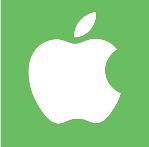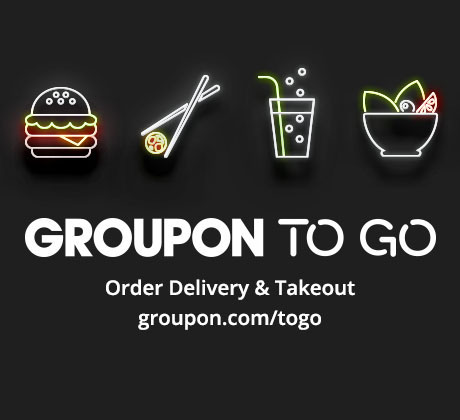Erik Qualman's Blog, page 527
August 4, 2015
How long are we spending on our phones?

A variety of studies have popped up over the last few years investigating the relationship between people and their phones. With mobile phone addiction (nomophobia) being the topic in question, is our guilty pleasure of apps, social media and selfies becoming a problem?
Frequency = Addiction
According to researchers at the University of Derby it definitely is, with 13% of subjects being classified as addicted to their smartphones – that’s one in eight people.
Their study found that we spend on average 3.6 hours a day on our devices. It also found that those who spend more time on their phones have a more severe addiction. Dr Hussain, Psychology Lecturer at the university, added that there is “a significant positive relationship… between narcissism and addiction to the phones, suggesting that the more narcissistic a person is, the more likely they are to be addicted to their smartphone”.
Attention = Danger
This addiction isn’t just impacting individuals. Government data reveals that 22% of fatal road traffic accidents involve mobile phones that have served in some way as a distraction. Commenting on these figures, MP Robert Goodwill believes that “the problem isn’t just drivers making phone calls, it is their use of phones to text or use the internet.”
The same government statistics reinforce Goodwill’s claim, as it was also found that the majority of drivers who are stopped for using their phone have it in their hand (66%), rather than to their ear (33%). Could it be that our need to check notifications and messages is to such an extent that we disobey the law? Whatever our excuse, it’s clear to see that smartphones are creating a problem.
Separation = Anxiety
So what happens if we go without our mobiles? A University of Missouri study found that subjects who were separated from their smartphones displayed signs of elevated heart rate, blood pressure and anxiety. It also found that those who suffered from separation anxiety had diminished cognitive skills, putting a direct link between cognitive ability and addiction.
“The results from our study suggest that iPhones are capable of becoming an extension of ourselves such that when separated, we experience a negative physiological state,” Russell Clayton, the lead author of the study, said in a statement.
Temperament = Addiction
That’s not to say that having our phone at all times steadies our nerves. Researchers at the University of Baylor investigated moods and behaviour, finding that “a person who is moody and temperamental may be more likely to be addicted to their cell phone than more stable individuals”. The research hinted that this could mean we reach for our phones in an attempt to ‘mood repair’.
You don’t have to be a scientist to work out that all of this research points to one conclusion: smartphones can be a problem. Bearing that in mind, if you feel that you spend too much time on your phone, you might need to make a conscious decision to spend more time away from it. Take a look at this guide to cutting the habit. After all, you managed to survive before you had one.
[image error]
August 3, 2015
Meerkat and Periscope Making Headway

Along with all the other apps and tools for social networking and marketing, you may be hearing a lot about Meerkat and Periscope lately.
Though Meerkat has been around a touch longer, both are used for live video streaming, from anywhere to anywhere, and are a window into someone else’s world.
They are similar, but have a few subtle differences and either may be a great social networking tool for your small business.
The Eyes Have It
As the following article looks at, all eyes are on Meerkat and Periscope recently.
This is due to:
Live streaming apps are hot – They are easy to use and all you need is the app and your phone. Meerkat and Periscope don’t have time limits like other apps (think Vine) and don’t use up your phone’s memory because the video isn’t saved. Whether you’re streaming your customer’s puppies’ play day or the creation of your new cupcake flavor, it’s easy to use;
They are engaging – Users can engage. With Meerkat and Periscope, users can comment and like the feed; they can ask questions, so there is the engagement factor. People feel like they are with you and part of whatever it may be that you are streaming;
Periscope viewers can watch replays – For 24 hours, those viewing Periscope can watch replays. Periscope also has no time delay; it truly is live. Meerkat does have a 30-second delay;
They are both easy to use, but don’t always scream “professionalism.” Because these apps are amateur, they can look amateur. That’s not a bad thing, though. There may be a time where you need a more professional look to something, but for a day to day or for an engaging social networking tool, either of these apps can be your friend. Be prepared for some shakes and bumps in your video. The ease and cost effectiveness may just override this, though;
Periscope and Twitter – Periscope is related to your Twitter account, so you don’t have to work on gaining on new followers. You already have them.
Be Creative with Customers
Your customers will enjoy spending “time” with you, especially if you are in the creative business.
People love that insider’s view and certainly one they can comment on and be part of.
You don’t have much to lose by using these new apps.
Have fun with them and remember this may not be for every purpose, especially your more professional marketing endeavors, but give live streaming a try.
Photo credit: Image courtesy of KROMKRATHOG at FreeDigitalPhotos.net
[image error]
Microsoft Said to Invest Big Sum in Uber

The New York Times - Microsoft has agreed to invest in Uber, according to people with knowledge of the matter, as part of a funding round that values the ride-hailing company at around $51 billion.
If the deal is finalized, Microsoft’s contribution would be a substantial amount of the financing, which totals about $1 billion, according to the people, who spoke on the condition of anonymity because the details of the fund-raising are not public.
“We filed to authorize this new funding more than two months ago,” an Uber spokeswoman said in a statement. “The filing is available to the public. We aren’t commenting on additional speculation.”
A Microsoft spokesman declined to comment. Microsoft’s participation was earlier reported by The Wall Street Journal.
This new round cements Uber’s place as one of the most richly valued private companies ever, along with other start-ups like Xiaomi, the Chinese electronics company valued by investors at around $45 billion, and Airbnb, the short-term lodging service valued at more than $24 billion.
It is also the latest fund-raising spree undertaken by Uber, which has added billions of dollars to its surging war chest. Uber has earmarked significant money for expansion into new markets like China, India and greater Southeast Asia. On Thursday, an Uber representative said the company had set aside $1 billion to spur growth specifically in India, where the company has faced stiff competition from local ride-hailing services.
Microsoft’s participation is a new development and may indicate a growing partnership between Uber and the software giant, which is based in Redmond, Wash. In May, a person familiar with the matter said this particular round of fund-raising was intended to form strategic allianceswhile simultaneously bolstering Uber’s coffers.
Uber has a history of bringing in important partners during funding rounds. In December, Baidu, the Chinese search giant, invested hundreds of millions in Uber. And in March, Times Internet, the digital venture of the Times of India Group media conglomerate, said it had agreed to a strategic investment in Uber.
Microsoft, too, has long invested in companies with which it may want to do business. In 2007, Microsoft paid $240 million for a 1.6 percent stake in Facebook, an investment that led to product integrations between the two companies. In the past, Skype video chat and Microsoft’s Bing search engine have been used to power Facebook software.
Uber recently acquired a portion of Microsoft’s mapping-technology assets and extended employment offers to more than 100 Microsoft employees. And while neither company has announced plans for a partnership, Microsoft’s struggling mobile app ecosystem could benefit if Uber devotes more resources to making its service available on Windows devices. Uber came out with a mobile app for Windows smartphones last year, well after it was available on Apple’s iOS and Google’s Android software.
Article by Mike Isaac and Nick Wingfield for The New York Times
[image error]
Don’t Let Your Career Distract You From These 3 Things

For those of you clicking through expecting things like “family”, “fun”, “travel”, I’m sorry to disappoint you. While those things are all great, I’m going to trust that you are an adult who can regulate your own life. Take some time to yourself. Don’t get addicted to workahol. That said, I think careers are great. If yours is well-chosen and developed, you’ll find you really like your work. You don’t mind going in. You feel like a part of the action, a driving force if you will. And you care about the results of your work. People who are in this category of job-satisfaction tend to let their jobs take up most or all of their attention – and they love every minute of it. The downside to this is you can let some pretty standard stuff slip through the cracks. These are things which you’ll want to have taken care of years down the line, when your career is slower or over.
via pixabay.com
1) Taking Advantage of Healthcare Benefits. Company health policies are often various and complicated. If you’re the sort of person who never really gets sick or goes to the doctor, it can be easy to just let the healthcare thing….happen. But this isn’t the way to do it. If you have an emergency, you want your healthcare plan to be there for you to keep you falling on your face, personally and financially. So sit down with your company’s human resources department, even for just one hour, and really dig into the meat of their plan offerings. When you’re done, you’ll be sure that the plan you have is the one you need. Bonus points if you organize life insurance at this time in your life (whenever that time might be). InsureChance Inc is a great way to find the most competitive rates and provisions on the market, without having to do so much as a health screening. I know you don’t have time for that. So why not make it easy on yourself to get the best coverage available?
2) Taking Advantage of Free Money. That’s what your employer-matched 401(k) is. Every time you deposit $100, so does your employer, until you meet the annual maximum. If you don’t max out your 401(k) you are leaving money on the table. And you’d be shocked to know how many people don’t really use their 401(k). Even really smart people miss out on this. And they do so for a lot of reasons. Maybe all your needs are more than covered at the moment. But the fact is, one day you probably won’t be raking it in quite like you are today. So you’ll want to have squirreled some funds away for a rainy day.
3) Take Advantage of Wellness Programming. If you’ve never been fit, you don’t have any idea how much of a difference it will make in your health and happiness. Today’s businesses are making it easier than ever to get well, sometimes even on the clock. So take advantage of these plans. There’s usually nifty rewards associated here.
[image error]
July 31, 2015
Microsoft launches free, 90-day trial of Windows 10

CNET – Microsoft has rolled out a free evaluation version of Windows 10 Enterprise edition so you can play with it for 90 days if you’re still on the fence about upgrading.
On Wednesday, Microsoft officially started pushing out Windows 10 as a free upgrade to Windows 7and 8.1 users who reserved a copy. The upgrade is free for one year, so if you haven’t yet installed it, you have plenty of time to decide whether or not to dive in. The upgrade naturally wipes out your existing installation of Windows 7 or 8.1, though you can roll back if for whatever reason you don’t want to stick with Windows 10.
Another option, though, is to install the free 90-day trial of Windows 10 Enterprise edition to check out the new OS.
But if the Windows 10 upgrade itself is free, why would you need to bother with a free evaluation edition? Well, installing the trial version gives you three months to check out Windows 10. During that time, you can still maintain your current Windows 7 or 8.1 environment for your everyday tasks. But — yes, there’s always a but — the Enterprise edition is geared for large businesses so it doesn’t offer the same features you’ll find in the Windows 10 Home and Windows 10 Pro editions that Microsoft has been pushing out as a free upgrade.
The downsides? Most of the apps that come with Windows 10 Home and Pro aren’t available in the Enterprise edition. So you won’t find Mail, Calendar, People, Photos, Cortana or other apps. And the Windows app store isn’t available either, so you can’t download apps. But despite these limitations, the Enterprise edition at least gives you a taste of Windows 10.
So, how would you install the Windows 10 Enterprise trial edition and still maintain your existing Windows 7 or 8.1 environment if you’re so inclined? Here, you have three options.
1) If you have a spare or test PC that’s lying around not doing anything, you can install the Enterprise edition cleanly on that PC and use that to check out Windows 10.
2) If you have a PC with enough disk space, you can create a dual-boot setup. A dual-boot setup allows you to run more than one operating system on the same PC by storing them in separate partitions. When you turn on your PC, a boot menu appears, allowing you decide whether you want to launch Windows 10 or Windows 7 or 8.1. This CNET how-to article explains how to set up a dual-boot environment for Windows 7 and 8, but the process would be the same for Windows 10 and Windows 7 or 8.1. And this article from Microsoft specifically explains how to dual-boot Windows 10 with another version of Windows.
3) As as for that third option, you can set up a free virtual machine program in Windows 7 or 8.1. A virtual machine program lets you install and run Windows 10 in its own environment within Windows 7 or 8.1. There are two free virtual machine programs that you can download and install to create your VM environment. One is called VirtualBox and is made by Oracle; the other is VMware Player made by VMware. This article by CNET’s Rick Broida explains how to set up a virtual machine using VirtualBox. This article by CNET’s Tom McNamara covers similar ground. And this article by yours truly explains how to run Windows 8 in a virtual machine using either VirtualBox or VMware Player.
Instead of using the Windows 10 Technical Preview as explained in the above stories, you would use the new Windows 10 Enterprise 90-trial edition.
To download the Windows 10 Enterprise 90-trial edition, go to Microsoft’s TechNet Evaluation Center.
Click the sign-in button to download Windows 10 Enterprise. Sign in with your Microsoft account credentials.
Click the “Register to continue” button to register for the Windows 10 Enterprise edition.
You then have to choose whether to download the 32-bit version or the 64-bit version. Unless you’re using a very old computer, choose the 64-bit version.
You then choose your language.
You’re then prompted to download the installation file, which is formatted as an ISO file you can copy to a USB drive or burn onto a DVD. Make sure the option to Save File is selected and then click OK.
After the file has downloaded, you’ll need a software program to copy the ISO file to a USB stick or to burn it onto a DVD. A good program for this is the free Windows USB/DVD Download Tool. Download and install this program.
As you run the program, you can then decide whether you want to copy the ISO file to a USB stick or burn it to a DVD. After you’ve completed the process, you can use the USB stick or DVD to install the Windows 10 Enterprise edition.
The basic installation steps are the same as outlined in the CNET articles mentioned previously. However, there is one step in installing the Windows 10 Enterprise edition that may be confusing.
At one point, the Enterprise edition asks if you want to join an Azure AD or join a domain. Unless you’re actually using the Enterprise edition in a large organization, neither of those options would apply or make sense. You do have to choose one or the other, however, to get past this screen. Choose either option.
You’re then asked to create a local account for Windows 10. Create a username and password, and Windows 10 will finally load. What if you want to use a Microsoft account for your Windows 10 trial version, so that you can sync it with the settings and options on your Windows 8.1 computer? No problem.
Click the Start button and then click on Settings. At the Settings screen, click the category for Accounts.
At the Accounts screen, make sure that the “Your account” setting is selected.
On the right pane, click the option to Sign in with a Microsoft account instead.
Type the username and password for your Microsoft account.
At the next screen, decide if you want to create a PIN for logging in.
At the “Your account” screen, click the link to Verify your identity on this PC.
You’ll receive a code on your mobile phone that you’ll use to verify your identity.
Yes, the Windows 10 Enterprise trial edition does have several limitations and missing features compared with the Windows 10 Home and Pro editions. But it is free. And running it in a dual-boot or virtual machine setup means you don’t have to wipe out your Windows 7 or 8.1 environment. So if you’re game, it may just be worth checking out.
Article by Lance Whitney for CNET
[image error]
Associate Yourself with Strong Social Media Initiatives

Local and national associations across the country are turning to social media to promote their brands and for good reason.
Not only does being socially savvy help build a noticeable online presence, it’s also a great way to connect with an ever-growing audience.
Here are just a few ways associations like yours can go the social media route when it comes to brand promotion:
Top Associations on Social Media
Social media is one of the best ways associations can promote their brands and spread the word about their causes.
That’s why some of the largest associations in the country are turning to sites like Facebook, Twitter, and Instragram to increase brand awareness.
Among them:
• American Wind Energy Association – With more than 77,000 likes on Facebook and 48,000 followers in Twitter, the AWEA has a strong social following. This association uses its social influence to spread the word about wind technology and the importance of renewable energy.
• American Public Health Association – With just over 60,000 Facebook likes and a whopping 419,000 Twitter followers, the APHA is taking on new social initiatives every day. The association’s main social purpose: sharing information about public health and important healthcare topics.
• National Restaurant Association – With 30,000 likes on Facebook and 31,000 followers on Twitter, the National Restaurant Association is spreading the word about the restaurant industry one social dish at a time. By keeping followers and restaurants owners alike updated on restaurant and food safety trends; this non-profit association is using its social channels to promote restaurant education.
Now that you have a better idea of how associations are using social media, here are a few ways your association can jump on the social bandwagon:
Research the Competition
If your association is new to social media, then it’s wise to do a little research on social competitors.
The article “Impact Study: Is Your Association Using Social Media The Right Way?” mentions the fact that not all associations on social media are reaching the same number of followers.
Before your association gets social, take a look at other associations both in and outside of your industry.
How many followers and likes do they have? What kind of content do they post? How active are they?
By taking social cues from top performers, you’ll have a great starting point for building your own social presence.
Target the Right Audience
With social media, your association can effectively target social audiences using geo-targeting.
Whether you want to connect with followers based on their location, gender, age, or any number of other characteristics, both Facebook and Twitter feature geo-targeting tools that allow you to do just that.
Promote Your Cause
The main reason associations turn to social media is to promote their causes.
Sure, brand recognition definitely plays a big part in the social outreach equation, but social media is also the perfect platform for sharing.
You can share news about your association, post pictures of association events, and keep followers updated on everything your association represents. This makes social media a great outreach tool as well as a great educational tool.
If your association is ready to increase its online presence and better promote its brand, then let social media help.
Photo credit: Image courtesy of Stuart Miles at FreeDigitalPhotos.net
[image error]
Apple To Release New Apple TV In September, Report Says

TechCrunch – Rumor has it that Apple should soon release a new version of its set-top box as well as a new streaming service for TV content. According to a new report by Buzzfeed, Apple was supposed to announce the new Apple TV at WWDC, but it was delayed for a September launch.
The current Apple TV was released in 2012 and runs an underclocked A5 chip, which was originally developed for the iPhone 4S. This time, the Apple TV should use a much more recent chip, such as the iPhone 6’s A8 chip. A slimmer design and more internal storage wouldn’t be a surprise as well.
Yet, two big questions remain on the user interface and Apple’s content strategy. The current interface of the Apple TV is cumbersome and the company knows that it has to do something to fix it. Using Siri for voice queries would be a first step as both Google and Amazon provide a similar feature with the Nexus Player and Fire TV.
Recent patent applications have also indicated that Apple has been working on some sort of touch interface for the Apple TV. It’s unclear whether Apple will take advantage of your iPhone or create a brand new remote with a touch screen.
On the content front, the Apple TV service has been rumored for years and it seems that it’s not quite ready yet. While the new Apple TV announcement has been delayed, you shouldn’t expect to see an Apple-branded streaming service in September. Instead, the company wants to release the new device with existing third-party services, such as Netflix, Hulu, HBO Now and Showtime as the existing Apple TV has been around for too long. Similarly, Apple wants people to buy as many new Apple TVs as possible in order to be ready when it launches its new streaming service months later.
As a reminder, Apple announced the Apple Watch during the iPhone event last year. Supply chain leaks indicate that Apple is working on iPhone 6S — Apple won’t spend an hour and a half talking about the new iPhones 6S, leaving room for another announcement. Announcing a new Apple TV during the same event would make sense.
Finally, Apple should release an SDK as well as a dedicated App Store for the TV. It would bring the Apple TV up to par with Android TV and make the device much more powerful. Even if Apple doesn’t launch its streaming service at the same time, third-party developers could start developing for the new device right away before the Apple TV becomes a must-have.
Article by Romain Dillet for TechCrunch
[image error]
How to Rework Your Blog Content for Social Media

You’re probably already aware it’s a good idea to promote your content in multiple ways. Many people do that by having a company blog, a social media account (or several!) and a website, for example.
However, if you’re under the impression it’s necessary to create brand-new content for each component of your online presence, that’s not always true. Keep reading to learn some actionable strategies for turning your blog posts into content that’s primed for social media.
Carefully Pick Through Your Best Posts
It’s important to look through all, or at least most, of your blog posts and pick out the ones that performed well. You may find it useful to depend on blog metrics to get that information, but you can also see which ones resonated most with your audience just by looking for evidence of interaction. If more readers than usual took the time to make a comment on a post, that’s a good indication they really liked what they read.
Once you’ve found the top blog posts, critique them and find the hidden gems within. Maybe some of them are packed with notable quotes or you have a few with phrases that make people think differently. Those parts of the posts are likely the sections that will be most worthwhile when repurposed for social media. Generally, look for portions that say a lot with only a few words, especially since some social media platforms have character limits.
Use YouTube to Introduce a Blog Post
Videos can gain momentum on social media, especially because they connect with people who sometimes don’t respond well to text-only content. Consider making a video introduction to a blog post and uploading it to YouTube before sharing the clip across social media.
When you’re figuring out what to include in the intro, try to break the blog content into an outline. What can people expect to learn by reading the blog post? Which topics are covered? Try to answer the “What’s in it for me?” question for your viewers.
Help People Do Things Better
There’s a lot of competition on social media. Often, people just scroll down for several seconds or even longer, only stopping once they’ve seen something that’s captured their attention.
With that in mind, think of ways you can tweak a blog post so it teaches people how to do something and how to do it easily. Liori Diamonds, a New York jeweler did that well by creating a how-to post about how newly engaged people can take super snapshots of their rings.
That was a great choice of topic, because it’s something many social media users will find useful. After all, people who aren’t recently engaged are likely to have friends in that situation.
Also, the company smartly picked a topic that smoothly integrates with their brand. You can do that as well by thinking about how the products you sell or services you provide improve the lives of your customers. Then, see if you have any existing blog posts that would work well as helpful how-to posts.
Find Pictures That Relate to Blog Posts
You may find that it’s not necessary to change the wording of your blog posts very much as long as you can find some graphics that are already geared for social media. As mentioned above, it’s a good idea to make your social media posts “pop.” Otherwise, people will probably just scroll past them.
As you’re repurposing your blog content for social media, keep your eyes peeled for graphics you can add to a social media post before directly linking to the blog. In some cases, you may find that the original blog post is too wordy to work well for social media. If that happens, edit the content so it’s scannable and broken into small paragraphs. Add pictures strategically to the post so they enhance it and keep people interested.
Make a Slideshow
SlideShare is a great example of a popular platform that combines both images and pictures in a highly shareable format. You may discover that at least one of your blog posts would fit well as a SlideShare presentation. As suggested in previous points, try to focus on only the most crucial bits. Anything that’s too lengthy might make people feel like they’re back in college watching a long-winded lecturer.
Why Is Repurposing Important?
Now that you’ve gotten some suggestions about how to edit your blog content and format so it performs well on social media, you might be wondering if it’s worth the effort. Keep in mind that by repurposing the content of your blog, you’re potentially saving money and time.
Plus, you can reach people who might not have noticed the content in its original form. Using the tips you’ve just read, make a plan to repurpose some blog content for social media over at least the next three months. There’s a good chance you’ll notice impressive results.
[image error]
July 30, 2015
What is the best option for an ideal email-marketing strategy?

It is a no secret that email-marketing is not dead as an online business. It develops rapidly. Moreover, email-marketing is considered one of the most inexpensive ways to increase sales, resell and upsell. It allows you to build direct communication between your brand (or a business company) and potential or existing customers. This process is a real strategy. And those who have successfully mastered it can make the best profit at the lowest cost.
There are two types of people in email-marketing:
• People who are just starting to get into this business.
• People who actively use it and develop it.
Obviously, all of them find strategy and all marketing steps equally important. Therefore, they often raise the point if there is a service that can best meet their needs at the best price?
Trying to compare the pros and cons of the two giants in this circuit, we come to:
GetResponse
This software offers the greatest number of functionals for successful email-marketing. GetResponse is easy to operate, it has a simple and clean interface that is comfortable both for beginners and for advanced users. It makes possible to create an adaptive design for emails using 500+ professionally designed templates. Moreover, emails that are created with this tool are perfectly displayed on the smartphone screen. User can check it with the help of preview feature.
The soft also allows to adjust A/B testing automatically and distribute the recipients according to test segments; adjust daily mailing with the help of the latest version of autoresponder; analyse revenue; track the exchange of information in social networks; import contacts from your computer and other services; and also it offers a ready-made subscription form. The user is also able to set up RSS to email.
A wide range of email-marketing methods includes monthly newsletter, triggered campaigns and video-email marketing. Another great advantage of GetResponse is their novelty – the Landing Page Creator, that makes it possible to attract additional customers without HTML knowledge.
Prices of GetResponse can also be a pleasant surprise, because users can save up to 18% on the cost of an annual subscription and cancel it any time.
ConstantContact
ConstantContact traces back to 1995, and 20 years of successful operating speaks for itself. So as GetResponse this software focuses on B2B, B2C and Large Scale Marketing campaigns. Its last year novelty – Toolkit is of great value. It is an all-in-one online venue that has all the necessary tools for dragging repeat customers and the new ones via email and all online-channels. It offers 15 marketing campaign types, such as customized templates, announcements, trackable coupons, local deals, donation campaign and event registration.
ConstantContact provides its users with multiple lists and segments, preferences management and signup forms. Though, it has got slightly smaller range of delivery methods, represented by monthly newsletters and social network delivery options.
Regarding email templates ConstantContact disposes average 400+ designs. The best pro of CC is an opportunity to promote your social pages via email, insert links to your Facebook, Twitter and LinkedIn information.
Pricing options are necessary to be mentioned, because at the same costs GetResponse and ConstantContact offer different number of emails. Frankly speaking, GetResponse offers 1000, 5000 and 10000 emails a month in compliance to pricing, while ConstantContact doesn’t.
Conclusion
In this comparison it is clear that GetResponse offers the greatest variety of services, association with customers, as well as creativity and freedom of action. In any case, tastes differ. Knowing the pros and cons of both services, you can choose the one that suits you best.
[image error]
Groupon Launches Its Own Food Delivery Business, Groupon To Go

TechCrunch – Following its acquisition of food delivery service OrderUp earlier this month, Groupon is today announcing its own nationwide delivery and takeout service, Groupon To Go. The program is initially available in Chicago, where it has been in pilot testing with 500 restaurants since March, but the company says it will expand to other metro regions throughout the year, including Boston and Austin this fall.

Image from Groupon
While there are now a number of on-demand food delivery businesses on the market, a big differentiator for Groupon’s service is that it claims it will save its customers up to 10 percent on every order.
The “savings” aspect to the new service reflects Groupon’s overall brand image, which has historically been about finding consumers good deals.
According to Sean Smyth, VP and GM at Groupon To Go, Groupon’s interest in building out a delivery service came about due to interest from its own customers. Food and Drink is one of Groupon’s largest and most popular categories, he says, and the company currently works with thousands of restaurants who had been looking for ways to promote their own takeout and delivery options using Groupon.
Over time, as Groupon signed up more restaurants to promote their menus and delivery options on its deals platform, the company realized there was an opportunity to expand and offer more of an “end-to-end” user experience, Smyth says.
“It’s one thing to promote menus and get order, but how do you get that last mile? It’s that last mile that really inspired us to look at a company like OrderUp,” he says, explaining why the company acquired the Baltimore-based startup earlier in July.
OrderUp, which still operates under its own brand name, offers food delivery in 40 cities across the U.S., mainly college towns. With the acquisition, Groupon is not only able to establish a food delivery foothold in dozens of cities in the U.S., it’s also working to integrate OrderUp’s technology into Groupon To Go. This includes things like the ability to track your order in progress as the driver heads your way, group ordering, order ahead functionality, and more.
However, at launch, Groupon To Go is largely working with those restaurants who have their own delivery and takeout services in place already. This includes national chains like Quiznos, Popeyes, Subway, and Papa John’s as well as Chicago restaurants like Ditka’s Restaurant, Al’s Beef, Adobo Grill, BIG & little’s, Freshii, Rosati’s Pizza, Star of Siam, and Wishbone.
However, Smyth says Groupon is months away from launching its own delivery infrastructure for those restaurants that haven’t yet provided delivery. Like many of today’s on-demand companies, this will involve the hiring of independent contractors who will become Groupon To Go’s delivery personnel. (The company isn’t yet commenting on headcount.)
This expansion to non-delivery restaurants also represents what Groupon believes gives it the ability to compete in the growing market where a number of companies are offering on-demand food delivery at the push of a button. While Smyth admits there is competition, he also says that many of the other services haven’t truly gone mainstream. As a point of comparison: while Groupon today says it has 25 million active uniques in North America, GrubHub recently said it has 5.9 million.

Image from Groupon
“Other services have done well to grow and promote themselves,” notes Smyth. “But it’s very focused on certain areas…If we can get to that consumer who really hasn’t used online delivery or online ordering to date, that’s how we can bring it to the mainstream.”
At launch, Groupon is subsidizing the Groupon To Go service by taking the consumer-facing 10% discount out of its own commissions on orders. But over time – and especially as it expands to offer its own delivery infrastructure – the company could extract higher margins from those restaurants who used Groupon’s delivery services.
The food takeout delivery service also nicely ties into Groupon’s deals engine, as restaurants on the platform will be able to log in to their Merchant Center web-based dashboard to make menu changes, or turn on or off the promotions for their delivery business as demand requires.
Groupon isn’t yet saying when it expects to see a nationwide footprint for Groupon To Go, or if OrderUp will continue to operate independently as a separate brand. However, Groupon To Go should be live in several more markets by the end of the year, and the plan for the future is to expand quickly. That may include other acquisitions in the food delivery space, Smyth notes.
“We want to be aggressively bringing this to market,” he says. “Acquisition is certainly a way to get there.”
Chicago residents can use Groupon To Go here. In addition to online, Groupon To Go is also featured within the Groupon mobile app.
Article by Sarah Perez for TechCrunch
[image error]




